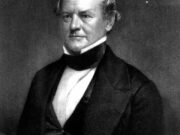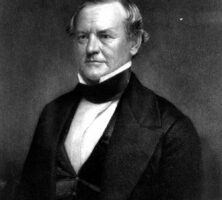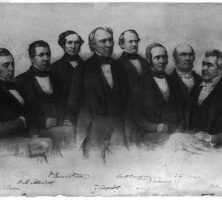George W. Crawford, the sole Whig to serve as governor of Georgia, was elected to two terms from 1843 to 1847. Crawford also served as a Georgia state representative, state attorney general, a U.S. congressman, and the secretary of war under U.S. president Zachary Taylor. In 1861 Crawford came out of retirement to chair the state secession convention in Milledgeville.
Education and Early Career
Born on December 22, 1798, in Columbia County, George Walker Crawford was the fourth son of Mary Ann and Peter Crawford and a cousin to the better-known political figure William Harris Crawford, who was a presidential candidate in 1824. Crawford’s father was a Revolutionary War (1775-83) veteran in Virginia who had moved to Georgia to settle on a piece of land he received for his military service. He received a Bachelor of Arts at the College of New Jersey (later Princeton University). After passing the bar in Georgia, he set up a law practice in Augusta with Henry Cumming, who later became known for promoting and overseeing the construction of the Augusta Canal. Crawford eventually earned a Master of Arts from the University of Georgia, and in 1826 he married Mary Ann Macintosh.
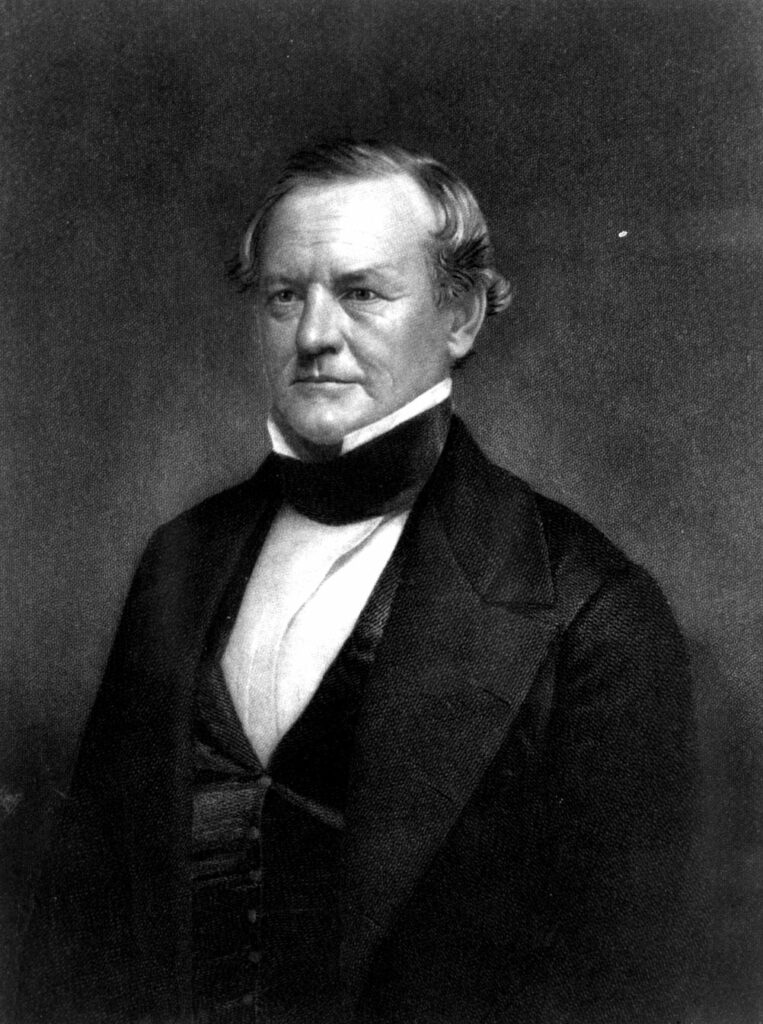
From The History of the State of Georgia, by I. W. Avery
Governor John Forsyth appointed Crawford to fill a vacant spot as attorney general of Georgia in 1827. The next year, Crawford instigated a duel with Thomas Burnside over a series of accusations that Burnside published about Crawford’s father. Crawford shot Burnside dead, but the incident would not inhibit his political career. Despite the controversy, he continued as attorney general until 1831. In 1837 Richmond County voters elected him to the state legislature under the States’ Rights ticket. During his five terms in office, Crawford distinguished himself as a fiscal conservative. In 1842 he won a vacant seat, as a Whig, in the U.S. House of Representatives, where he spent a quiet year in Congress.
Governor
In an attempt to capitalize on Crawford’s electoral success, the Georgia Whig Party unanimously chose him to represent it in the 1843 gubernatorial election. Thanks in part to divisions within the Democratic Party in Georgia, Crawford defeated Mark Anthony Cooper to become the only Whig to occupy the Governor’s Mansion. During his first term (1843-45), Crawford focused on dismantling the state’s Central Bank, but he also helped to expand railroad construction and reformed the state penitentiary to make it a more economically sound institution.
Crawford won a second term as governor in 1845, despite Henry Clay’s failure to carry the state for the Whigs in the previous year’s presidential election. The governor used the next two years to continue the programs from his first term. He also persuaded the state legislature to pass a law that created the Supreme Court of Georgia. Crawford’s concentration on local issues was due in part to the Georgia Whigs’ division over national issues.
Later Career
Crawford chose not to run for a third term as governor, and in 1849 President Taylor appointed him secretary of war. A scandal tainted Crawford’s time in the cabinet, however. While in office, he was involved in settling a claim from the government for the Galphin family (descendants of Indian trader George Galphin) and received a large share of the settlement for his services. In the midst of accusations and the sudden death of President Taylor in 1850, Crawford resigned from office and retired from public life for a decade. In 1861 he was elected to represent Richmond County at Georgia’s secession convention. At the convention, the delegates selected Crawford as chairman for the proceedings, and he oversaw the vote of secession. Following the convention, Crawford retired to Richmond County, where he died on July 27, 1872.
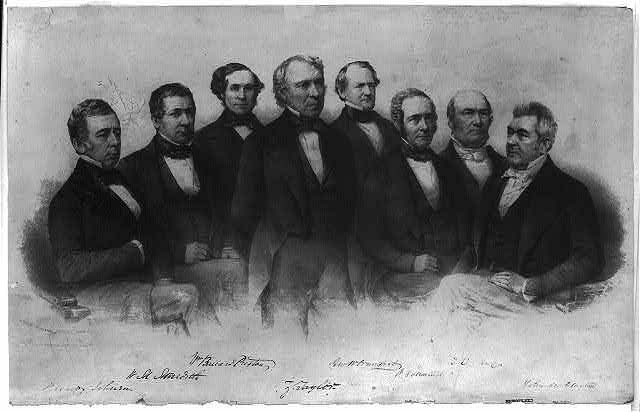
Courtesy of Library of Congress, Prints and Photographs Division


